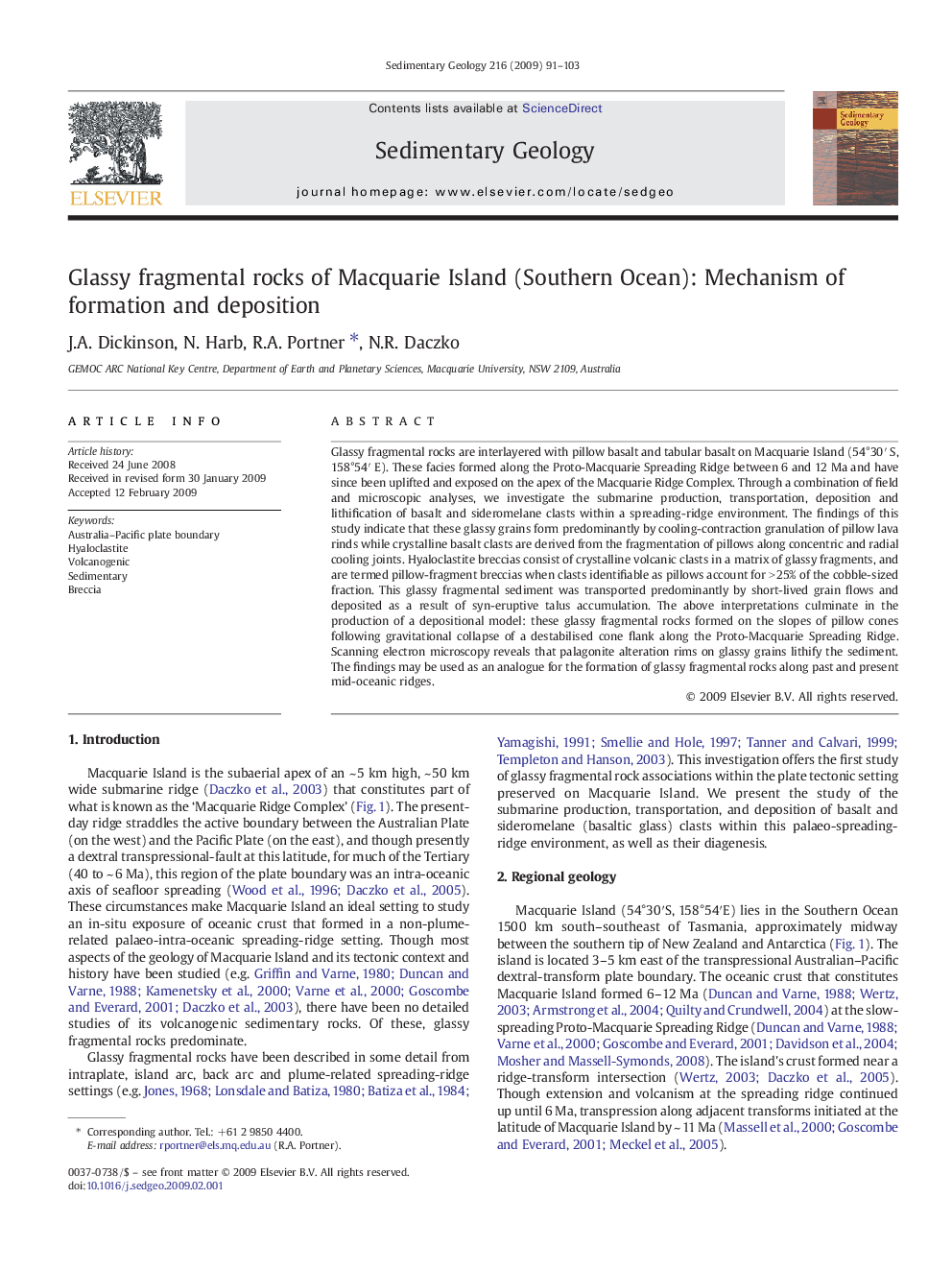| Article ID | Journal | Published Year | Pages | File Type |
|---|---|---|---|---|
| 4690478 | Sedimentary Geology | 2009 | 13 Pages |
Abstract
Glassy fragmental rocks are interlayered with pillow basalt and tabular basalt on Macquarie Island (54°30ⲠS, 158°54ⲠE). These facies formed along the Proto-Macquarie Spreading Ridge between 6 and 12 Ma and have since been uplifted and exposed on the apex of the Macquarie Ridge Complex. Through a combination of field and microscopic analyses, we investigate the submarine production, transportation, deposition and lithification of basalt and sideromelane clasts within a spreading-ridge environment. The findings of this study indicate that these glassy grains form predominantly by cooling-contraction granulation of pillow lava rinds while crystalline basalt clasts are derived from the fragmentation of pillows along concentric and radial cooling joints. Hyaloclastite breccias consist of crystalline volcanic clasts in a matrix of glassy fragments, and are termed pillow-fragment breccias when clasts identifiable as pillows account for > 25% of the cobble-sized fraction. This glassy fragmental sediment was transported predominantly by short-lived grain flows and deposited as a result of syn-eruptive talus accumulation. The above interpretations culminate in the production of a depositional model: these glassy fragmental rocks formed on the slopes of pillow cones following gravitational collapse of a destabilised cone flank along the Proto-Macquarie Spreading Ridge. Scanning electron microscopy reveals that palagonite alteration rims on glassy grains lithify the sediment. The findings may be used as an analogue for the formation of glassy fragmental rocks along past and present mid-oceanic ridges.
Keywords
Related Topics
Physical Sciences and Engineering
Earth and Planetary Sciences
Earth-Surface Processes
Authors
J.A. Dickinson, N. Harb, R.A. Portner, N.R. Daczko,
